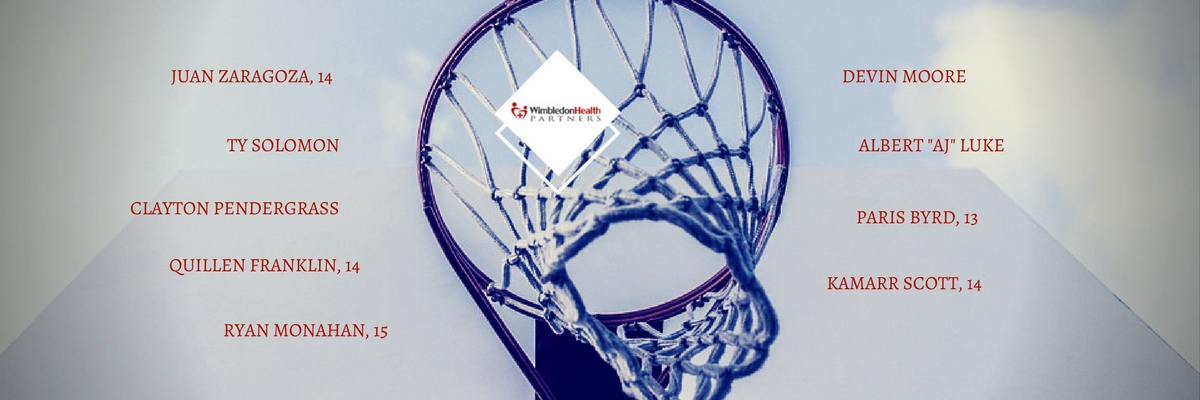Tragedy (and Hope) in the Basketball Community. What More Can Be Done to Protect Student Athletes?

On December 14th in California, 14-year-old Juan Zaragoza was running around the track when he collapsed in sudden cardiac arrest due to a rare heart condition (source: 10news.com). Imperial High School coaches Richard Diaz and Wolfgang Homer administered CPR until paramedics arrived and used an AED. These efforts saved the teenager’s life. No further information has been given about the specific heart condition Juan suffers from or how it will be treated.
Before him, South Carolina State University athlete Tyvoris Solomon suffered sudden cardiac arrest during a high-profile basketball game against North Carolina State University and was able to be resuscitated. Ty’s harrowing story spread throughout the media, bringing much-needed attention to the threat sudden cardiac arrest poses to young athletes—basketball players being the most affected.
Les Jones, the lead official working the game, said, “It was unbelievable. You could hear a pin drop. You could hear teammates telling the young man ‘Don’t die. Don’t leave us.’ That was just heartwarming. You are looking at a young man laying on the floor lifeless and his teammates crying their eyes out and praying. It was just unbelievable.” (source: heraldsun.com)
Ty is recovering at home, and his family hasn’t released details of his condition.
Devin Moore’s story has a different, tragic ending. The Kent State University senior was playing basketball at the rec center when he suddenly collapsed. Staff members reportedly tried to revive Devin, but he was pronounced dead at the hospital. No further details have been given regarding his death.
And then there is Paris Byrd. The 13-year-old student athlete died December 5th after suffering sudden cardiac arrest during after-school basketball tryouts. It was revealed that she died from undiagnosed hypertrophic cardiomyopathy—the #1 cause of sudden cardiac death in young athletes. Her death has left her community stunned.
In November, Clayton Pendergrass (South Carolina), Quillen Franklin (Oregon), and Ryan Monahan (Minnesota) each suffered sudden cardiac arrest while playing basketball. All three lives were saved. University of Montevallo basketball player Albert Luke died from cardiac arrest caused by an enlarged heart. He was found in his hotel room in Georgia following a basketball game against Albany State University.
Sudden cardiac arrest in young athletes is happening all around us. For some, heroic actions saved lives, but for others, resuscitation was not possible.
It seems stories of CPR and AED use saving the lives of students in cardiac arrest at sporting events or on school grounds are becoming more widespread as more states pass laws mandating CPR instruction in schools and AEDs become more prominent. But they are not a guarantee. Student athletes continue to die.
A review published in the Journal of the American College of Cardiology highlights the inconsistency in mandatory CPR training in high schools. Of the school administrators surveyed in 32 states requiring CPR instruction, only 77 percent of respondents said they provided this training. Eleven percent of schools reported using a non-certified teacher or coach, and only 63 percent reported that they train their students to use AEDs.
Being able to identify a heart condition early can be a matter of life or death for a student athlete. For schools who are taking measures to proactively test their athletes, it appears to be paying off.
According to a November 2017 article in the American Academy of Pediatrics, the incidence of sudden cardiac death in children and young adults in the U.S. has declined over the last 16 years, partially attributed to advances in prevention and treatment of sudden cardiac death.
As students are diagnosed with heart conditions (many of which they had never heard of), they are able to alter routines or undergo life-saving surgery to help protect their lives. DETECTION leads to knowledge. KNOWLEDGE leads to action. And ACTION leads to PREVENTION.
In a study conducted between 2007 and 2013 published by the Journal of the American Medical Association, findings reveal that in states that mandate newborn screening policies for critical congenital heart disease using pulse oximetry, infant deaths decreased by 33.4% (due to critical congenital heart disease) compared to states without such policies.
This simple test has helped save numerous babies. How many more lives could be saved if states mandated cardiac testing of student athletes prior to participation?
Schools have the choice to add an extra layer of protection when it comes to the safety of their athletes. Proactively testing students for cardiovascular conditions can be done, on a mass scale, with relatively little effort required from school personnel. Invest the time to get it done.
Story Credit: https://www.wimbledonhealthpartners.com/tragedy-hope-basketball-community-student-athletes/


